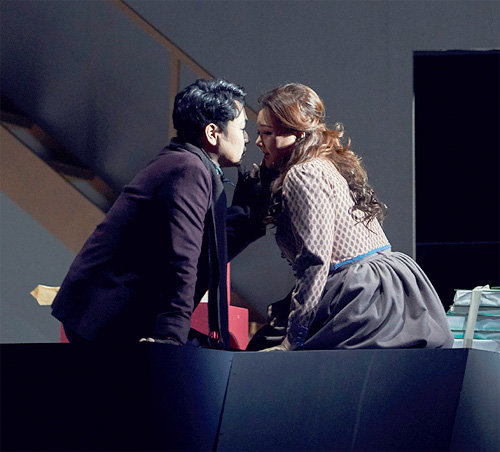What makes ‘La bohème’ attractive?
What makes ‘La bohème’ attractive?
Posted December. 01, 2020 07:45,
Updated December. 01, 2020 07:45

Giacomo Puccini’s “La bohème” is always popular in December. With the first two acts set on Christmas Eve, the opera is sung across the world at the end of every year. This year, it will be performed by the Korea National Opera at the Gwangju Culture and Art Center on Tuesday, at the Seoul Arts Center on December 11-12, and at the Andong Culture and Art Center on December 23-24.
Act 4 sounds oddly familiar to those who have listened to Act 1. When Mimi, who has fallen ill, comes to visit her lover Rodolfo at his house and his roommates leave the house to give them space, the same melodies from Act 1 are played by the orchestra. It is the same melodies that were played for joyful moments when Rodolfo had fun with his roommates and fell in love with Mimi. What did Puccini want to achieve by repeating the same melodic ideas?
Right before this scene, his friends leave the room and it becomes quiet. Mimi who was barely conscious begins to recognize her surroundings. It feels familiar no matter how long she has been away. She has flashbacks of all the fun she had there and the first encounter with her lover. By playing the same melodies in this tragic moment, Puccini probably wanted to remind the audience of the happy memories that she reminisces about through music.
This was hardly the first time Puccini used the technique. He used it even in his very first opera “Le Villi.” The melodies used for a prayer that wishes a safe trip recur towards the end of the opera when the male character screams in regret. What was his intention?
Puccini was a fan of German composer Wagner’s when he was young and was intrigued by his leitmotif technique. The leitmotif is a musical signature designed to represent a character or theme. For instance, if a musical motif for a character called Siegfried is played, the audience can know Siegfried will appear.
Puccini was inspired by this technique, but a motif did not have to represent a specific character or event. Repeating the same melodies was enough to evoke earlier moments or events.
In the Devine Comedy by Dante Alighieri, who lived in Tuscany, Italy six centuries before Puccini, Francesca says, “There is no greater sorrow than thinking back upon a happy time in misery.” It contrasts happy moments of the past with the misery of the present just as Puccini did in the last act of “La bohème.” Puccini’s use of recurring motifs successfully highlights the contrast.
gustav@donga.com







